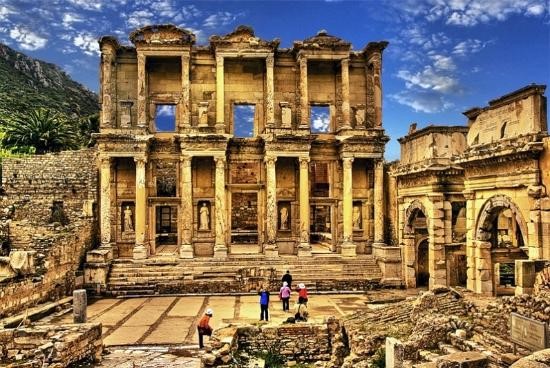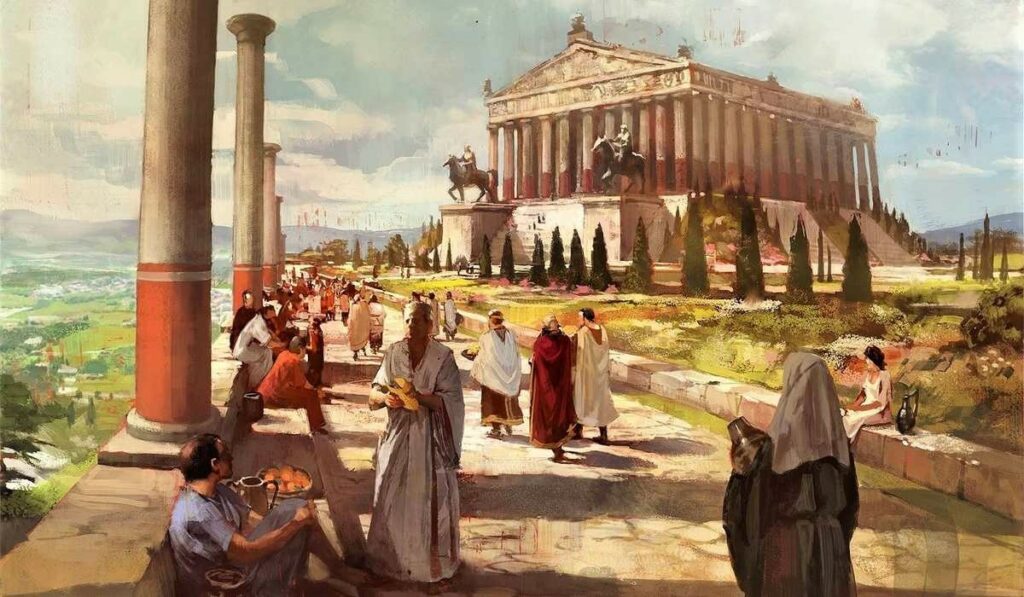Ancient Ephesus – the Crossroads of Civilizations

Do you appreciate the atmosphere of antiquity and are planning a trip to Turkey? Then Ephesus should definitely become the point of your route — it definitely will not disappoint you. Here, on the territory of what was once Asia Minor, and now modern Turkey, the largest ancient Roman ruins in the world have been preserved.
History of Ephesus

Ephesus, one of the most visited attractions in Turkey and one of the oldest cities in the world. It was once a large and influential port city on the shores of the Aegean Sea. And in the series of its advantages, the main place was occupied by the temple in honor of the goddess Artemis.
The history of Ephesus is a mirror reflection of the fate of many cities in the east of Asia Minor. Initially they were founded as large Greek settlements, then fell under Persian rule and were conquered by Alexander the Great. They changed hands several times, went to the Romans, and then became part of the Ottoman Empire. Ephesus was a large metropolis with wide avenues, temples, theaters, a library, a market square, a city council, etc.
Big theatre
The three-story theater building was surrounded by rows accommodating no less than 25,000 people. Wild animal battles and gladiator battles, public trials and theatrical productions were held in the arena. Such was the spector of the entertainment of the inhabitants of Ephesus.
Gymnasium
There is a field next to the Ephesian amphitheater. Today it is a repository of ruins, but once there was a gymnasium where they taught reading, writing, philosophy, simultaneously with an intensive course of physical training. Initially, there were several rooms in the ancient intellectual sports complex. In particular, rooms for massages and rubbing with oils, warm and cold baths (tipidarium and frigidarium), rest rooms with comfortable benches. Nearby, on outdoor sports grounds, they played ball, competed in running and jumping.
Library

The Library of Celsus, one of the most famous and photographed places of ancient Ephesus. Its facade was restored to its original form during the restoration of the city. The Greeks and Romans not only paid great attention to knowledge, but also wanted to preserve it for future generations. Accordingly, everything that was known to people at that time had to be recorded and saved. For these purposes, the Romans built a library.
”Marble Rooms”
The preserved Ephesian exhibit is a marble toilet. Round holes are cut in the seats, and there are keyhole—shaped slits in the front.
In the absence of toilet paper, a Mediterranean sponge (elastic porous mass) was used, impaled on a wooden stick. At the entrance to the restroom, it was necessary to choose a stick with a sponge, wash it in a flowing channel of cold water flowing under your feet, or using a tank with salt water/ vinegar located here. After the procedure was done, the sponges were thrown out, and the sticks were left for the next visitor.
In general, the ancient Romans received a lot from the public toilet, but not personal space, which they probably didn’t really need.On the contrary, they had conversations and shared the news. Political news and poems could be heard here.
Retail space
The ancient Romans, in the heyday of Ephesus, paid a lot of attention to shopping. The Agora was the name of a huge square where there were shops and shops of Ephesus. Actually, it was the commercial center of the city, known in the region for its textiles, wines, perfumes and other goods. Merchants from all over the empire came here. Local artisans and shopkeepers have been engaged in trade for centuries. In addition, the Agora was also a place for informal public meetings.
Temple of Artemis

The temple of Artemis was built in the middle of the VI century BC. A couple of centuries later, it was burned by a local resident Gerostratus — a man who wants to become famous at any cost. What should I say he succeeded. The temple, in turn, was restored.
From the destroyed temple, most of the marble columns were taken to Constantinople (Istanbul), where they were used for the construction of the Hagia Sophia. Some of the pieces and statues, including the sculptures of Artemis, are in the local museum in Selchuk. The museum exposition contains fine examples of Roman art and original products.
On the site of the legendary temple, today there is an unsightly swamp with a column sticking out of the water alone. And once there was a passion for Artemis.
Statues of Artemis
The statues of Artemis in the temple were huge. But the residents of Ephesus and visiting guests wanted to have exactly the same, only smaller in size, for example, to carry with them or put in the house. Demand generated supply. And everyone’s desire to “own Artemis” led to the development of the industry of making mini-idols. It is worth noting that not only in those distant times Artemis “fed ” local sculptors, but today her figures are filled with Hilt. For everyone who came here, the value of Ephesus has its own. For some— it is another city with well-preserved ruins. For others, it is a red line between the ancient world and modern times.
You can read this article in Russian language: Древний Эфес — перекресток цивилизаций






